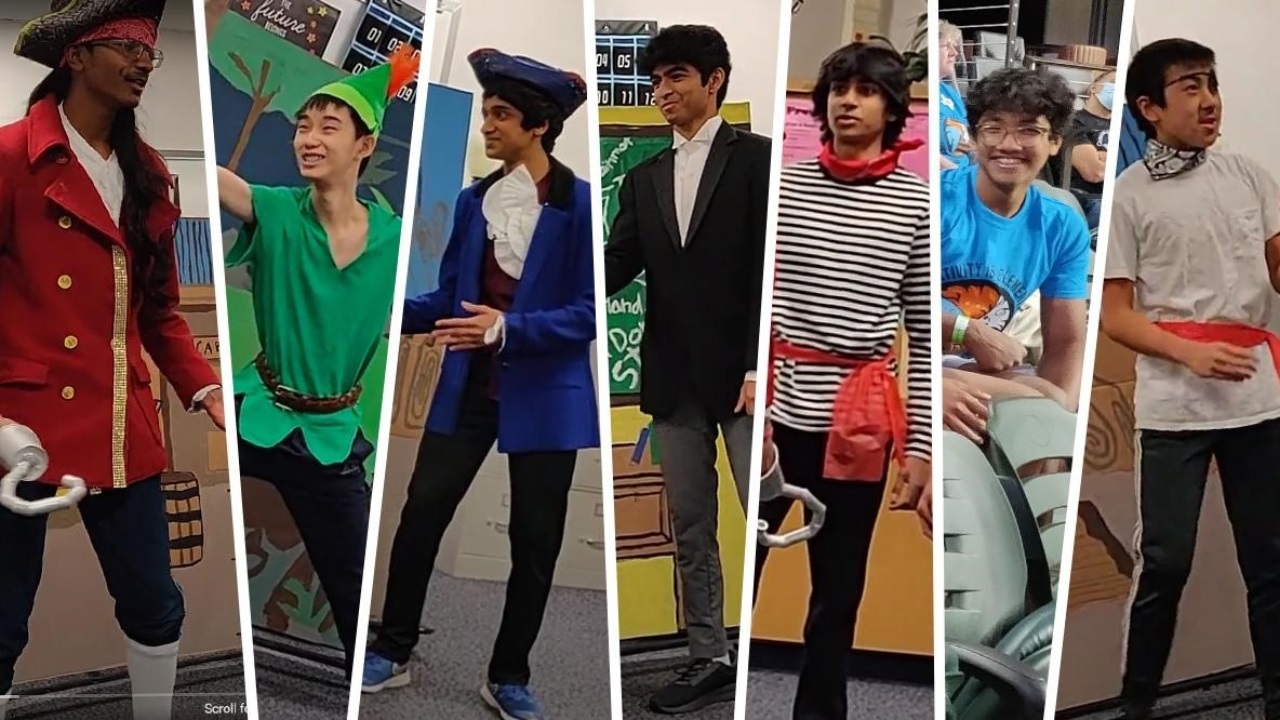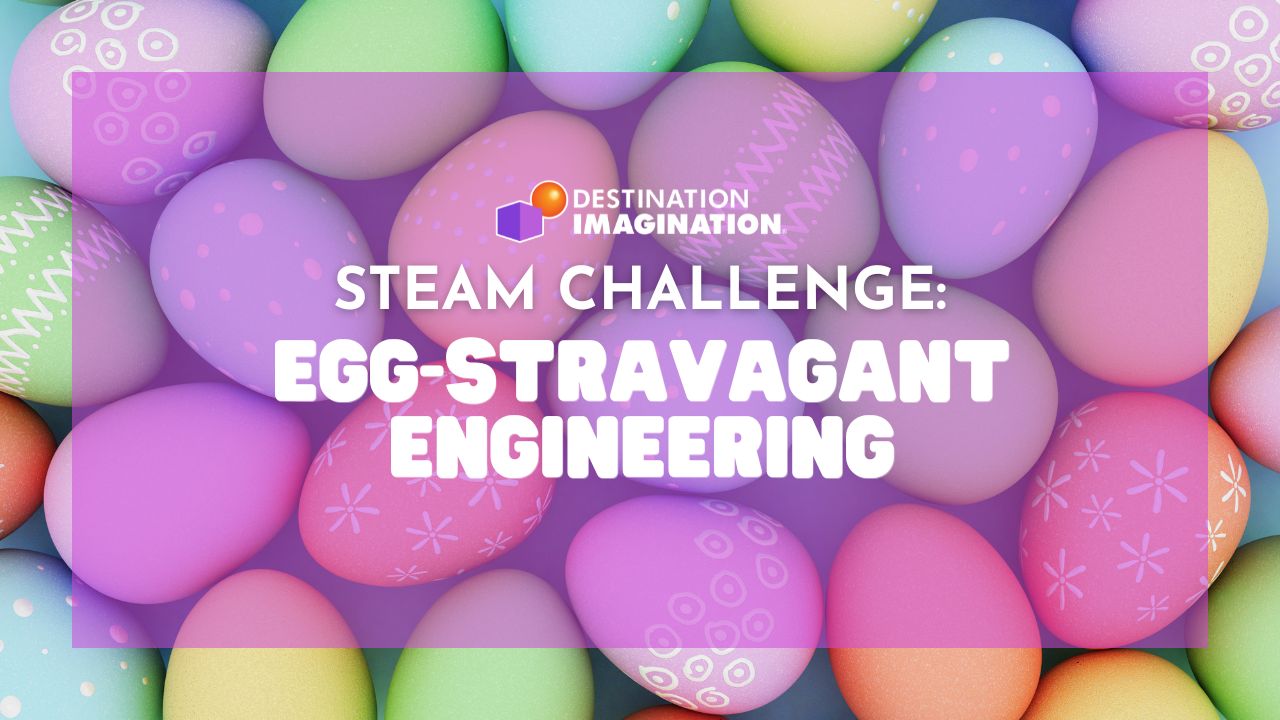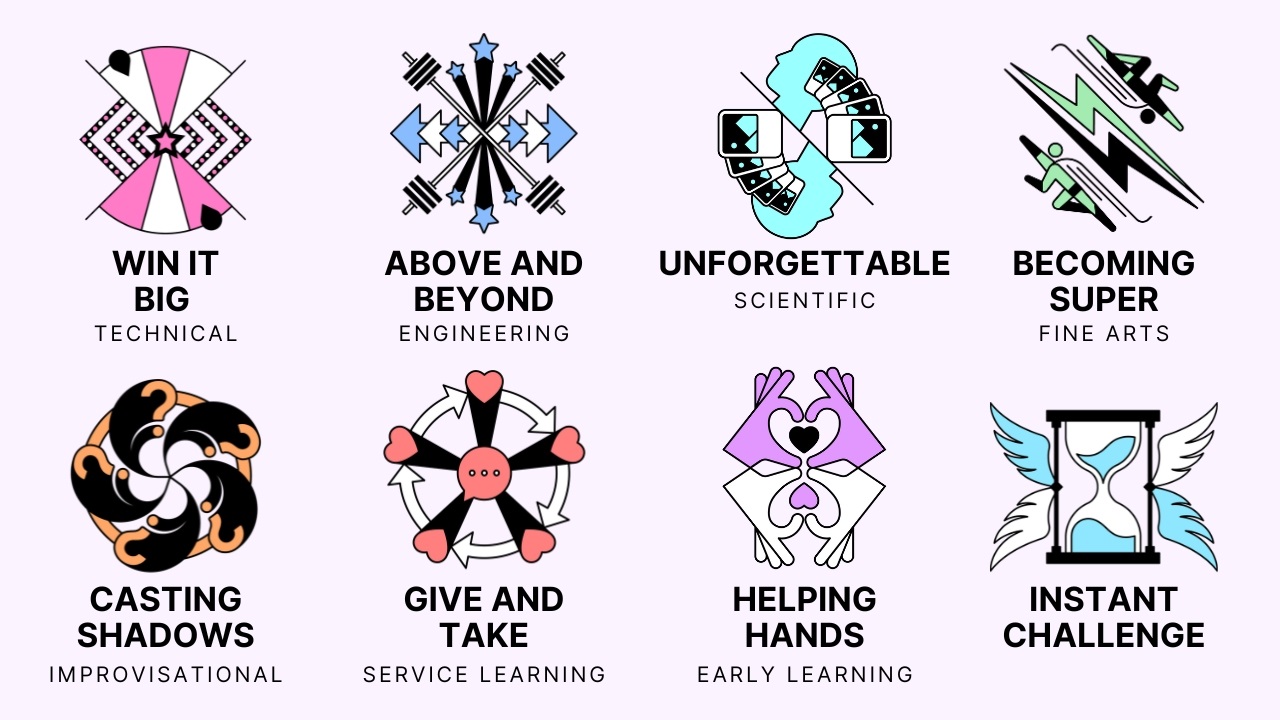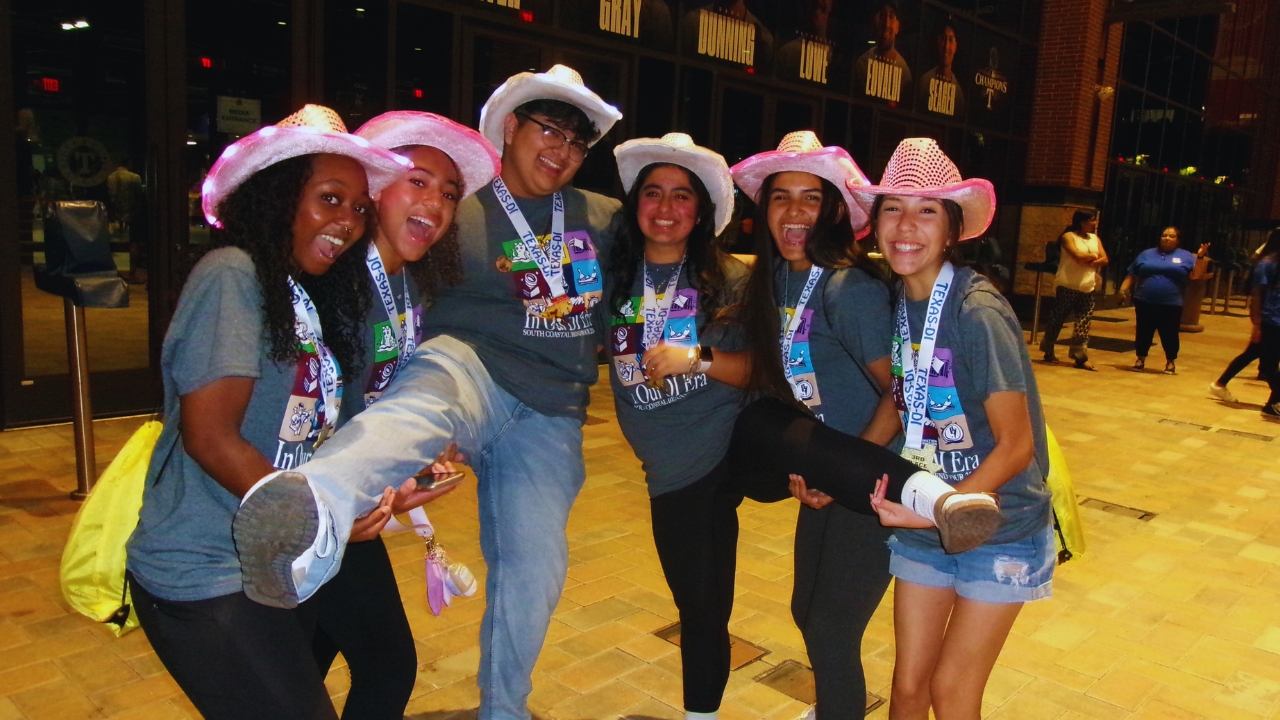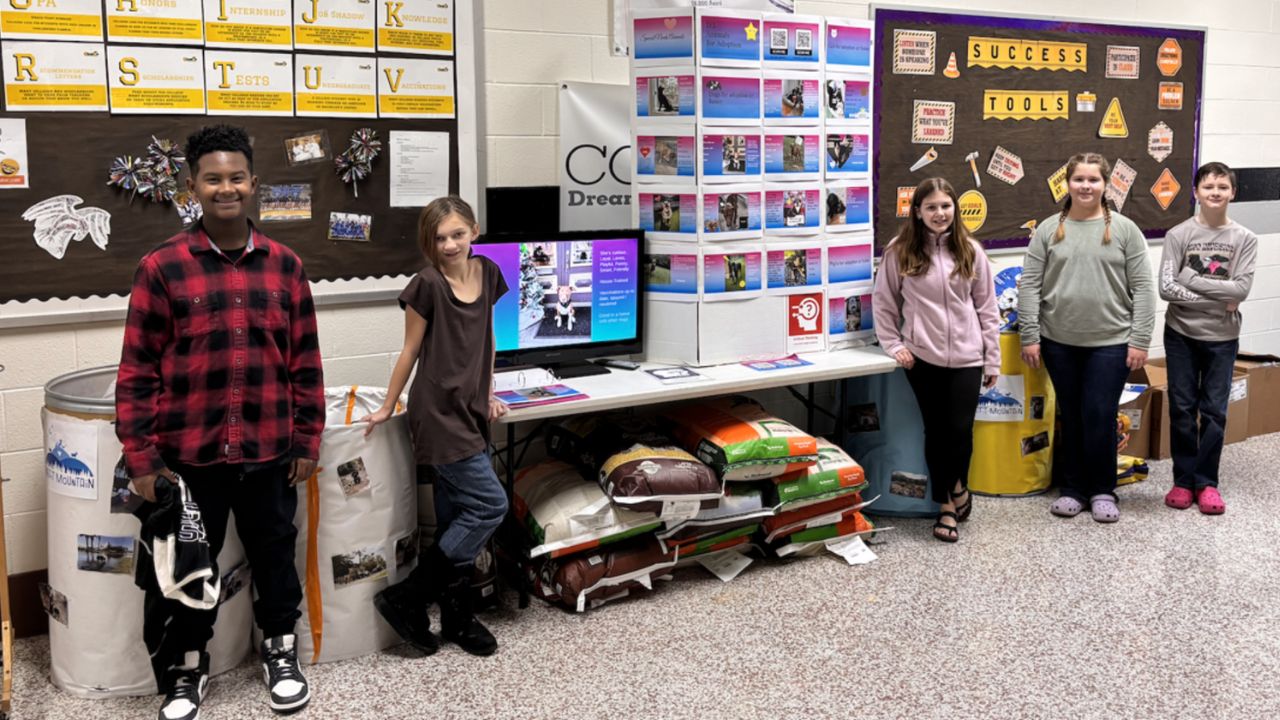By Haibei Ren, DI Correspondent and Team Manager in Coppell, Texas
Talking about the growth of my Destination Imagination (DI) team is particularly interesting this year because their Team Challenge solution explores the world of Peter Pan–the boy who wouldn’t grow up. In their eight-minute flipped retelling of the story, they hand the narrative to Captain Hook, the original antagonist, who reveals the secret reason why he never stops seeking revenge on Peter Pan. The result is a nostalgic and colorful prequel about growing up, chasing dreams, and what terrible things can happen if one tries to forbid a young boy from wanting to grow up and pursue his dreams.
My team of seven ninth-grade boys started DI together in elementary school. Their dream for the coveted Magellan Award–which recognizes students who have completed solutions to Challenges in each of DI’s six competitive categories (Technical, Scientific, Engineering, Fine Arts, Improvisational, and Service Learning) over the years–has motivated them to challenge themselves with a different DI category every year. My team was often excited by action, motion, and tangible objectives and didn’t have much to do with literary research or artistic nuances in their earlier DI journeys. After years of fun adventures in five of the competitive categories, they finally settled down to tackle the Fine Arts Challenge this year.
This year’s Fine Arts Challenge, Flip the Script, awards up to 70% of the points to the story, its characters, and its theatrical presentation. We realized we had to put much more effort into the script than ever before and focus on building characters. Through hard work and diligence, the team proved that your weakness could be a competitive advantage in disguise.
We started with five or six story ideas from the initial roundtables. I encouraged the team to explore character building as part of idea generation and the team responded well to the exercise. We asked all kinds of questions about the main character of each story in order to explore how small details in the character’s backstory and personality could affect what they do and how the plotline advances. We tried to develop all ideas far enough using the character study method before picking the best story to proceed with. This exercise helped the team gain deeper insight into the potential of each idea, which resulted in a final vote that was more rational and better suited to the team’s personality, interests, and skill set.
As soon as voting was finalized, we quickly split into multiple departments. Designating tasks went smoothly, as my team has grown together for years and knows each other’s strengths very well.
Our writer, who has always been a skillful and imaginative storyteller, picked up the story idea and ran with it. After countless rewrites, we got an ultra-tight script timed within eight minutes with relatable characters and natural but powerful conflicts. Well-balanced lyrical narrative and genuine humor kept the performance light-hearted while still being thought-provoking.
A few natural builders took up technical design and scenery construction. The building process spanned a few months, but they were able to reference past DI experiences to make sound decisions through trial and error. The final product worked just as expected and looked great.
The art department involved the entire team, dealing with graphic, costume, and prop design and the production of visual items of all sizes. These tasks were fun but also labor-intensive. Fortunately, tedious hard work became enjoyable when done with good friends.
During the late mid-season, the team formed an ambitious plan to create an original music score to accompany the performance. None of them had written music before, but one team member, a gifted pianist and violinist, accepted the challenge and poured his heart into the new adventure. The rest of the team and I held on to our faith and cheered from the end of the tunnel until one day that miraculous prelude emerged in black and white. With the prelude in place, everything else in the musical plan followed through right in time for the competition, including a longer and more intense variation to accompany the climax scene.
During the weeks leading up to the tournament, the team fought hard to bring their creation to life from all angles. Team members wore multiple hats and all stepped up to do whatever it took to make it happen. One team member, who couldn’t attend the tournament because of a conflict, took the disappointment maturely and worked hard to leave his creative imprint all over the stage production. Actors rehearsed tirelessly to iron out wrinkles, especially for key scenes that demanded precise visual, audio, verbal, and choreographic coordination for optimal effects. Strategic backup plans were made to ensure all projects racing toward the finish line worked out cohesively.
By the end, I removed my Team Manager hat and put on my parent hat because the team was managing everything so well. It was exactly what we as parents want our children to experience—challenges that teach them how to do hard things and take risks that will make them stronger. After all the dust settled and all tears were shed about missing the state tournament, we celebrated our rewarding journey, including the successful production that exceeded everyone’s wildest expectations and the Magellan Awards that three of our team members brought home. There are always new adventures on the horizon, and this pirate ship sails on.
